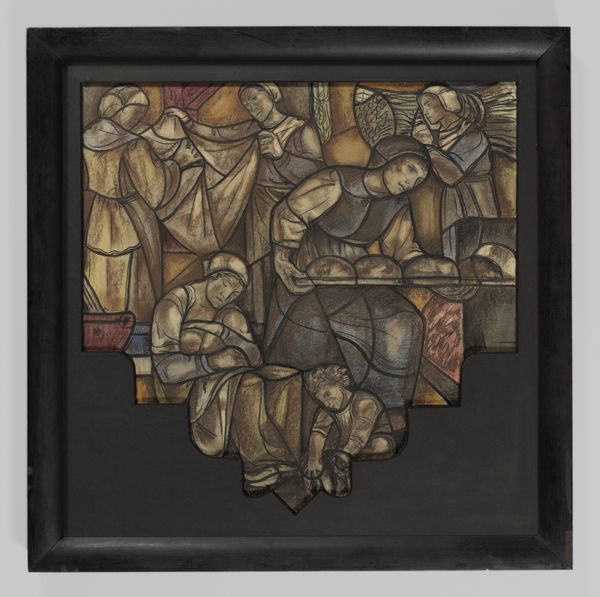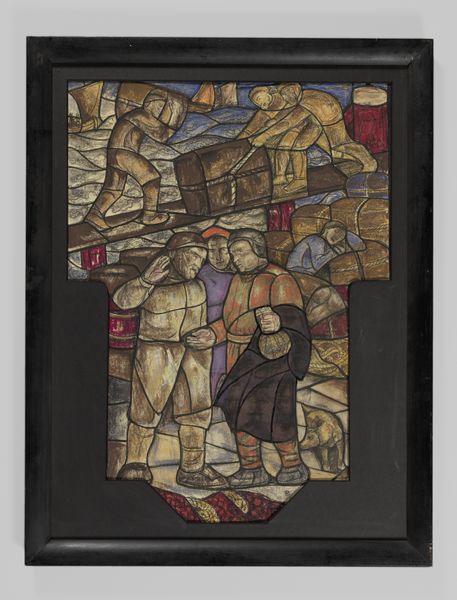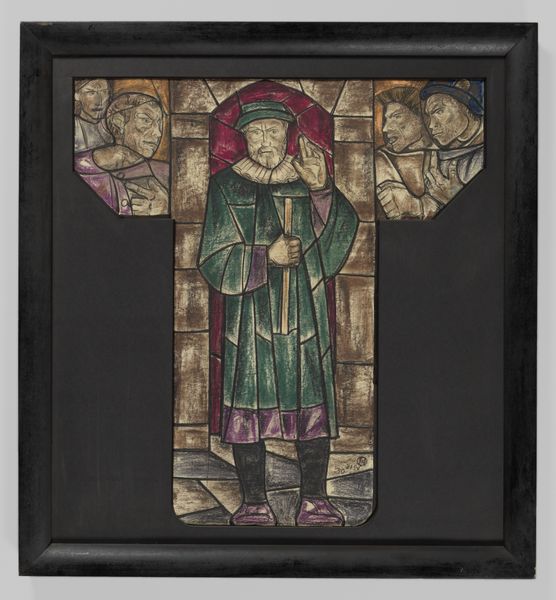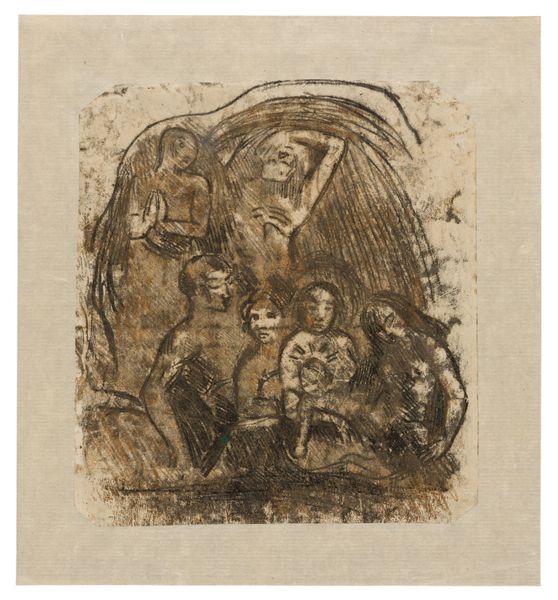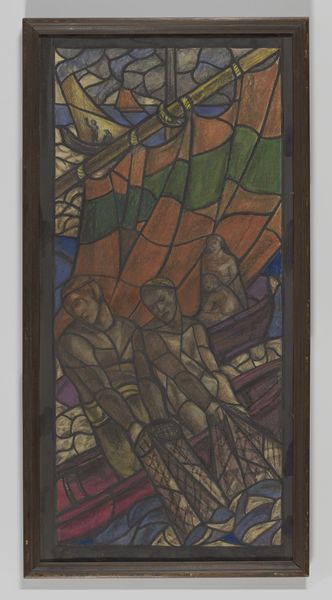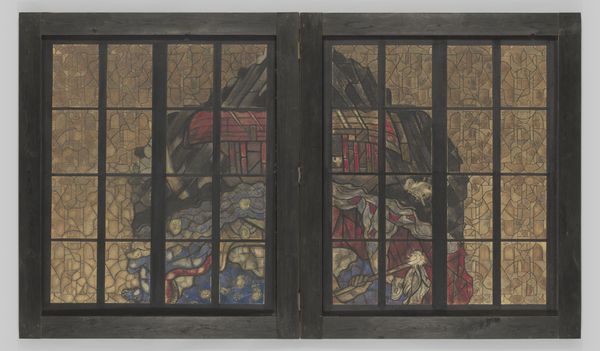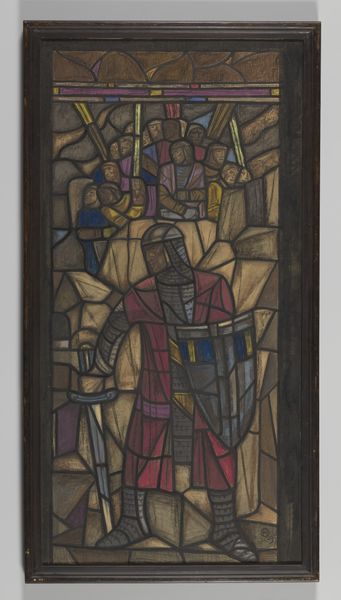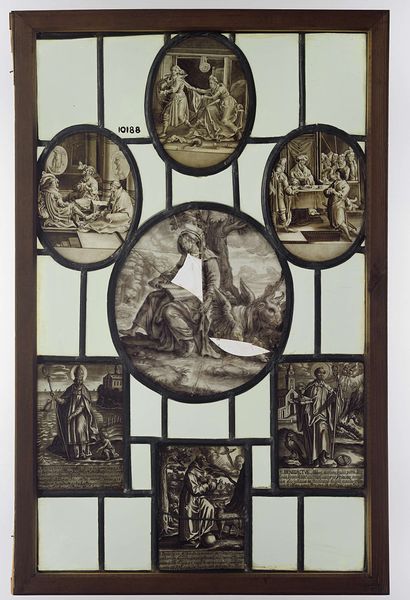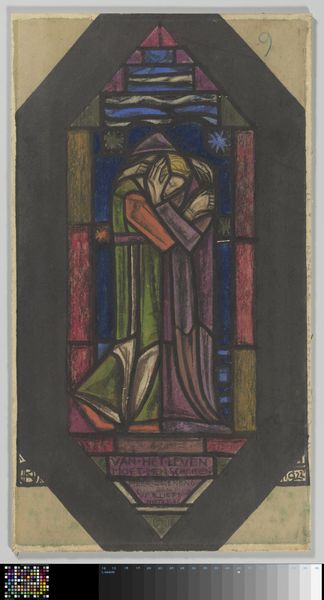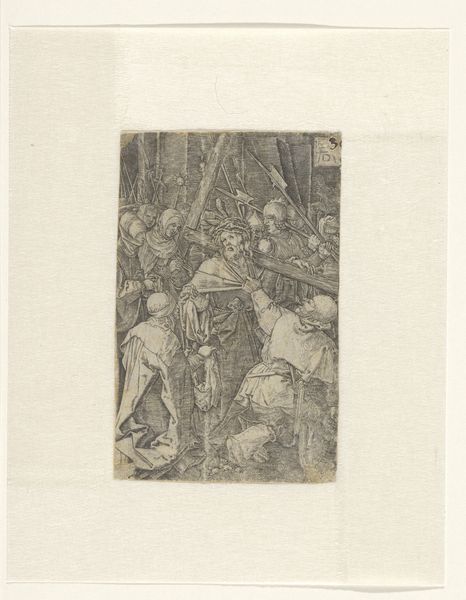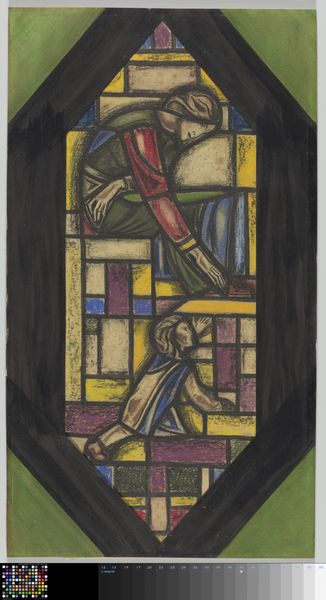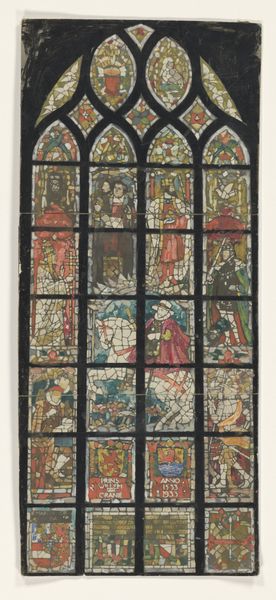
Ontwerp voor raam in het Stadhuis in Amsterdam Possibly 1930 - 1934
0:00
0:00
mixed-media, mural
#
mixed-media
#
medieval
#
sculpture
#
figuration
#
history-painting
#
decorative-art
#
mural
#
decorative art
Dimensions: height 690 mm, width 690 mm, height 840 mm, width 840 mm
Copyright: Rijks Museum: Open Domain
Curator: Richard Nicolaüs Roland Holst created this mixed-media mural, "Ontwerp voor raam in het Stadhuis in Amsterdam," likely between 1930 and 1934. It's currently held at the Rijksmuseum. The piece seems inspired by medieval art. Editor: My first thought is that it's somber and reverent. The muted colors and architectural setting definitely evoke a sense of solemnity. Almost like witnessing a secret ritual. Curator: Absolutely. Holst was deeply involved in the decorative arts movement in the Netherlands. These designs intended for Amsterdam's City Hall highlight his interest in the symbolic function of public art and its role in conveying societal values. He was aiming to integrate art into the daily lives of citizens. Editor: I'm drawn to the specific iconography. Notice the figures, possibly monks or religious figures attending to the sick. The motif of caring for the afflicted resonates strongly, an enduring symbol across cultures and epochs representing compassion and humanism. What I can see as a bishop might represent church's power? Curator: It is certainly likely Holst wanted to engage viewers with ideas concerning the social responsibility for vulnerable. His work during that period tended to be critical of power structures in place while aiming to provide symbols for an utopian societal arrangement. Editor: It is worth investigating how these depictions might mirror concerns related to the Great Depression affecting many people. But also, for example, I see similarities to images conveying suffering in Christian religious paintings across centuries. These patterns keep the cultural memory alive, don't they? Curator: Indeed. Holst was steeped in both socialist ideals and art historical references. I believe there are always tensions created between the two but his contribution stands as a good testimony of someone attempting to translate universal symbolic value in his context. Editor: I've now observed the architectural framing further suggesting windows in the top corner of the panel—a further architectural feature underscoring a visual gateway perhaps symbolizing opportunities but also framing the events presented. Curator: That is right! This work reminds us that artistic creation is also very much a political and social practice, where even details such as style, colour and frame work play critical roles in shaping viewer perception. Editor: Yes! And for me this mural highlights the psychological depth that images can contain, reminding us how art preserves emotional narratives, reflecting social contexts across periods.
Comments
No comments
Be the first to comment and join the conversation on the ultimate creative platform.
